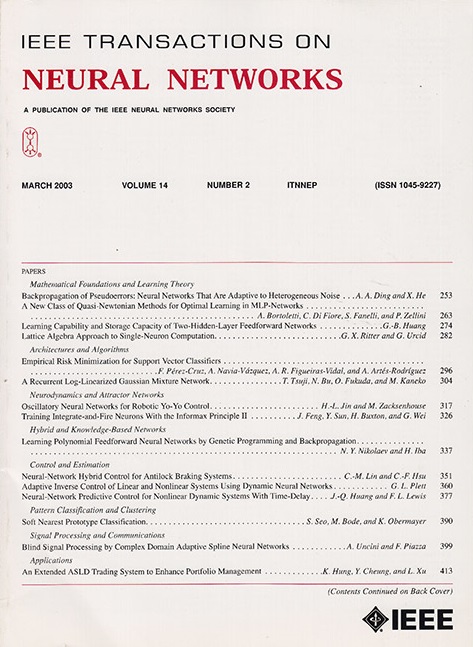FEU-Diff: A Diffusion Model With Fuzzy Evidence-Driven Dynamic Uncertainty Fusion for Medical Image Segmentation.
IF 8.9
1区 计算机科学
Q1 COMPUTER SCIENCE, ARTIFICIAL INTELLIGENCE
IEEE transactions on neural networks and learning systems
Pub Date : 2025-09-16
DOI:10.1109/tnnls.2025.3609085
引用次数: 0
Abstract
Diffusion models, as a class of generative frameworks based on step-wise denoising, have recently attracted significant attention in the field of medical image segmentation. However, existing diffusion-based methods typically rely on static fusion strategies to integrate conditional priors with denoised features, making them difficult to adaptively balance their respective contributions at different denoising stages. Moreover, these methods often lack explicit modeling of pixel-level uncertainty in ambiguous regions, which may lead to the loss of structural details during the iterative denoising process, ultimately compromising the accuracy (Acc) and completeness of the final segmentation results. To this end, we propose FEU-Diff, a diffusion-based segmentation framework that integrates fuzzy evidence modeling and uncertainty fusion (UF) mechanisms. Specifically, a fuzzy semantic enhancement (FSE) module is designed to model pixel-level uncertainty through Gaussian membership functions and fuzzy logic rules, enhancing the model's ability to identify and represent ambiguous boundaries. An evidence dynamic fusion (EDF) module estimates feature confidence via a Dirichlet-based distribution and adaptively guides the fusion of conditional information and denoised features across different denoising stages. Furthermore, the UF module quantifies discrepancies among multisource predictions to compensate for structural detail loss during the iterative denoising process. Extensive experiments on four public datasets show that FEU-Diff consistently outperforms state-of-the-art (SOTA) methods, achieving an average gain of 1.42% in the Dice similarity coefficient (DSC), 1.47% in intersection over union (IoU), and a 2.26 mm reduction in the 95th percentile Hausdorff distance (HD95). In addition, our method generates uncertainty maps that enhance clinical interpretability.FEU-Diff:一种基于模糊证据驱动动态不确定性融合的医学图像分割扩散模型。
扩散模型作为一类基于逐步去噪的生成框架,近年来在医学图像分割领域受到广泛关注。然而,现有的基于扩散的方法通常依赖于静态融合策略来整合条件先验和去噪特征,难以自适应地平衡它们在不同去噪阶段的各自贡献。此外,这些方法往往缺乏对模糊区域像素级不确定性的显式建模,这可能导致迭代去噪过程中结构细节的丢失,最终影响最终分割结果的准确性(Acc)和完整性。为此,我们提出了FEU-Diff,这是一个基于扩散的分割框架,它集成了模糊证据建模和不确定性融合(UF)机制。具体而言,设计了模糊语义增强(FSE)模块,通过高斯隶属函数和模糊逻辑规则对像素级不确定性进行建模,增强了模型识别和表示模糊边界的能力。证据动态融合(EDF)模块通过基于dirichlet的分布估计特征置信度,并自适应地引导条件信息和去噪特征在不同去噪阶段的融合。此外,UF模块量化多源预测之间的差异,以补偿迭代去噪过程中的结构细节损失。在4个公开数据集上进行的大量实验表明,FEU-Diff始终优于最先进的(SOTA)方法,在Dice相似系数(DSC)上实现了1.42%的平均增益,在相交与结合(IoU)上实现了1.47%的平均增益,在第95百分位Hausdorff距离(HD95)上实现了2.26 mm的减少。此外,我们的方法生成不确定性图,提高临床可解释性。
本文章由计算机程序翻译,如有差异,请以英文原文为准。
求助全文
约1分钟内获得全文
求助全文
来源期刊

IEEE transactions on neural networks and learning systems
COMPUTER SCIENCE, ARTIFICIAL INTELLIGENCE-COMPUTER SCIENCE, HARDWARE & ARCHITECTURE
CiteScore
23.80
自引率
9.60%
发文量
2102
审稿时长
3-8 weeks
期刊介绍:
The focus of IEEE Transactions on Neural Networks and Learning Systems is to present scholarly articles discussing the theory, design, and applications of neural networks as well as other learning systems. The journal primarily highlights technical and scientific research in this domain.
 求助内容:
求助内容: 应助结果提醒方式:
应助结果提醒方式:


